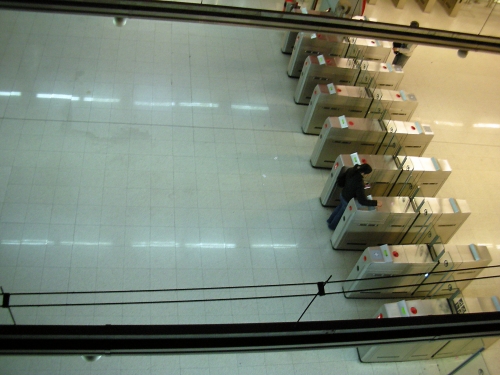What would happen if I jumped the turnstile at my local tube station? Well okay, duck under in my case.
Best case: people glare at me like I’m scum. Worst case: I’m thrown back out and have to pay a fine (and there are even more glares).
It would be perhaps three to five dollars that I’d be trying to avoid paying.
Active investing
Active investing benefits society by sending capital to higher return enterprises. The fees I pay for active management are paying to maintain the economic infrastructure.
Passive investing
People who buy passive funds are avoiding their share of paying for economic development. They are freeloading. This could be worth hundreds of dollars per year.
Questions
Why don’t we think like this?
I suspect it’s complicated.
One possibility is that we think that too much effort is being put into active management. In the analogy this would be like thinking that our taxes have already paid for the system and we shouldn’t be charged at the gate as well. Active management is like buying a first-class seat.
How do we know what the right amount of active management is?
Clearly the two extremes are wrong.
No active management would mean that capital would be allocated randomly.
If everyone spent all their time trying to beat the market, then there would be no real enterprises in which to invest.
How can active management be most efficiently organized?
If we knew the answer to the previous question, how would we get there?
This might be one of the goals in updating our primitive markets.
Epilogue
Photo by Daquella manera via everystockphoto.com.


Perhaps the answer is to allow people to choose freely between investing in (a) active investment, (b) passive investment, or (c) some other private investment of their own choosing (effectively a subset of (a) ). We could then allow market mechanisms to establish an equilibrium between those who believe the market is over-invested in passive investment and those who believe the opposite.
Calum,
Thanks for the comment. Isn’t that basically the current state of affairs?
I don’t have much faith in such decisions being made in a rational manner. In particular my impression is that “investing” for a lot of non-finance people means to try to beat the market — passive investment might seem irrational to such people.
Pingback: Blog year 2010 in review | Portfolio Probe | Generate random portfolios. Fund management software by Burns Statistics